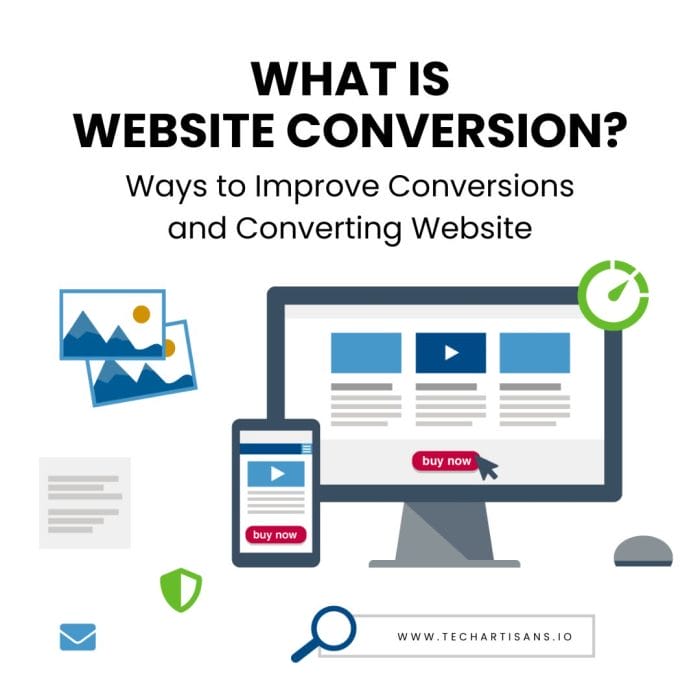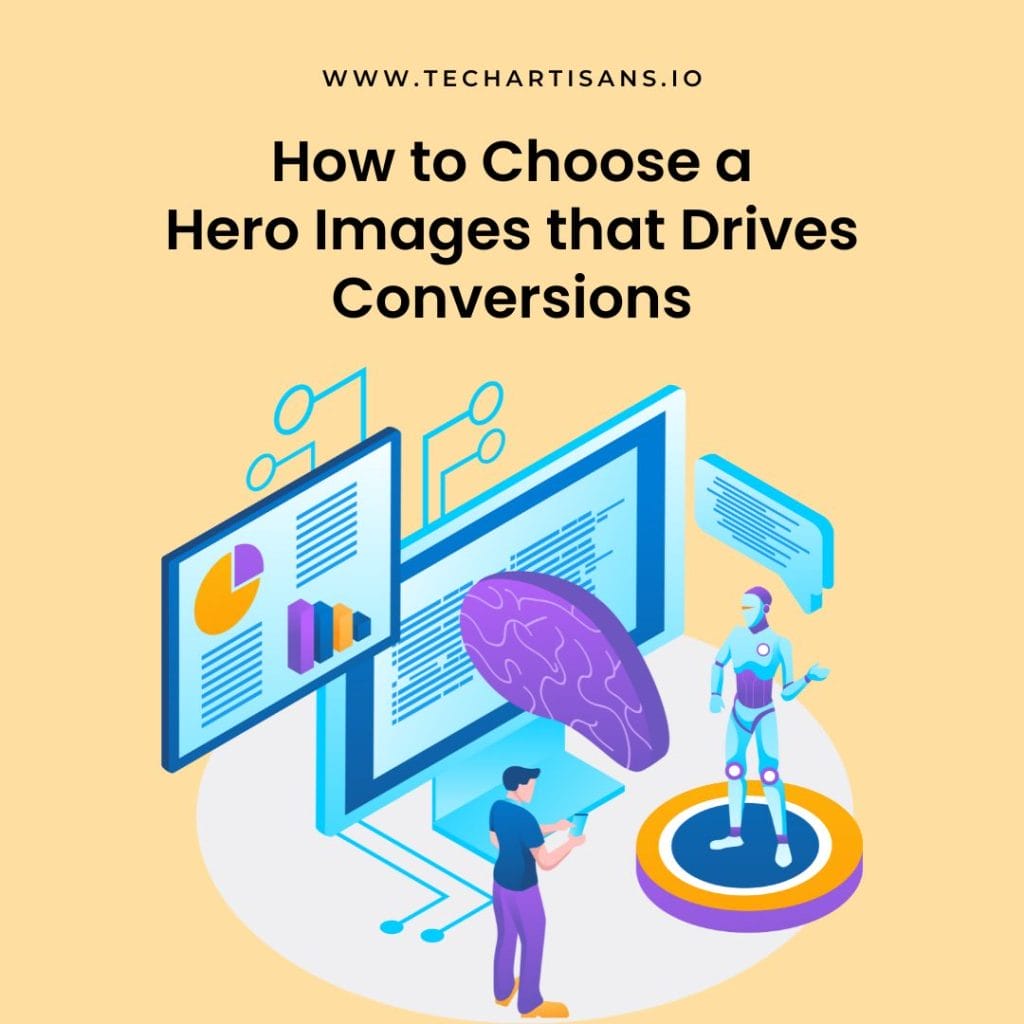Website conversion holds the key to unlocking your business’s true potential. It is the process that turns your website’s visitors into customers, propelling your business’s success to new heights. But what exactly does it require, and how can it be improved? In this blog, we will explore website conversion and its importance. Also, I will reveal proven strategies to boost your conversion rates. So, let’s delve into it!
What is Website Conversion?
Website conversion is the process of converting website visitors into paying customers or clients. It’s about making each visit count by encouraging users to take a specific action, For a more in-depth understanding, check out our explanation of what website conversion entails such as purchasing, signing up, or contacting your business.
Current State of Website Conversions
In today’s digital age, understanding the current state of website conversions is pivotal for success.
1. Average Conversion Rates Across Industries
Average conversion rates vary across industries, ranging from 2% to 5%. E-commerce and retail sites typically experience a 2.86% conversion rate, Explore further details on the benefits of having a website for your business. while financial services see around 5.01%. Understanding these benchmarks can help businesses strategize for improved website conversions.
2. Potential of Improving Conversion Rates
Improving conversion rates has immense potential. It increases revenue, optimizes marketing expenditure, enhances user experience, and builds a loyal customer base. Thus, it’s a highly beneficial strategy for businesses of all sizes.
Understanding the Conversion Funnel
Let’s explore the Conversion Funnel, a critical tool for channeling web visitors toward desired actions.
1. Stages of The Conversion Funnel
The conversion funnel consists of four stages: Awareness, Interest, Decision, and Action, Learn about how to create user flow that aligns with these stages. In the Awareness stage, potential customers discover your brand. Interest is when they learn more about your product or service. In Decision, they consider buying, and finally, Action denotes the purchase.
2. Guiding Visitors Through Each Stage
Guiding visitors through each stage of the conversion funnel is crucial. It ensures customers are informed, engaged, and prompted to take action. This strategic guidance can transform website visitors into customers, driving sales and customer loyalty.
Effective Strategies to Boost Conversions
Let’s explore strategies to enhance website conversions
1. Power of CTAs
The power of Call To Action (CTAs) in driving conversions cannot be ignored. Compelling CTAs guide visitors towards desired actions, acting as a beacon that leads the way to conversion. They trigger immediate responses, making them a potent tool in the arsenal of any conversion-focused website.
2. Simplifying User Experience
Simplifying the user experience is pivotal for enhancing website conversions. A straightforward, intuitive interface promotes effortless navigation, encouraging visitors to complete their desired actions. This involves optimizing website design, reducing loading times, and clarifying the conversion process, thus facilitating a seamless journey for your potential customers.
3. Building Trust and Credibility
Building trust and credibility, For more on this, read about the importance of responsive web design in building trust is crucial for converting website visitors into loyal customers. A secure, transparent, and user-friendly website builds trust. Displaying testimonials, certifications, and awards enhances credibility, which, in turn, boosts website conversion rates. It’s about demonstrating that your business is reliable and worthy of consumer trust.
4. Engaging Content
Engaging content is critical in engaging visitors and stimulating interaction. It intrigues, informs, and compels users to take action. From gripping headlines to relatable stories, well-crafted content can significantly elevate your website conversion rates, turning casual visitors into dedicated customers.
5. Advanced Conversion Techniques
Advanced conversion techniques use data analytics, A/B testing, and heat mapping. These tools offer deeper insights into user behavior, helping optimize your website for maximum conversions. They allow precise adjustments, making your conversion strategies more effective and results-driven.
By implementing these strategies, you can effectively enhance your website’s ability to convert visitors into customers.
Role of A/B Testing in Conversion Optimization
A/B testing is a powerful tool for optimizing website conversion rates. Let’s delve into its role.
1. Importance of Continuous Testing
Continuous testing is a vital component of conversion optimization. Regularly testing and tweaking different elements of your site allows you to understand what works best for your audience, improve user experience, and ultimately enhance your website conversion rate.
2. Examples of Successful A/B Tests
Dell, a renowned tech company, achieved a 300% conversion increase by A/B testing their product page layout. Similarly, Electronic Arts saw a staggering 43% increase in game sales by simply testing and altering the CTA button on their sales page. These stories underscore the power of A/B testing in optimizing website conversions. Discover more through our guide on SEO testing and tools.
Another noteworthy example of successful A/B testing is that of Humana, a health insurance provider. They saw a 192% increase in their click-through rate by simply changing the design and wording of their call-to-action. This illustrates how A/B testing can significantly enhance website conversions through minor tweaks.
Impact of External Factors on Conversions
External factors profoundly influence website conversions, impacting user behavior and decision-making processes. Let’s delve into its details.
1. Seasonal Trends
Seasonal trends, Understanding digital marketing trends can also help navigate these seasonal variations that significantly impact converting websites, as consumer behavior fluctuates yearly. Understanding these patterns and strategically adapting your marketing efforts can capitalize on high-demand periods, enhancing your website conversion rates.
2. Market Competition
Market competition can heavily influence website conversions. A competitive landscape encourages businesses to optimize their online presence continuously, improving user experience and enhancing conversion rates. Staying ahead involves constant benchmarking and innovation, ensuring a high-performing, converting website.
3. Economic Factors
Economic factors, such as inflation rates and consumer purchasing power, also influence website conversions. Economic changes can affect consumer behavior, making it vital for websites to change their strategies and offerings to maintain and improve conversions.
Conclusion
Converting a website into a powerhouse of business success involves a multifaceted approach. Businesses can significantly boost their conversion rates by employing effective CTAs, simplifying the user experience, building trust, delivering engaging content, and leveraging advanced conversion techniques. A/B testing and adaptability to external factors further enhance this process.
Remember, a converting website is not a static entity but a dynamic and evolving platform that requires continuous optimization and upgradation. Utilize the power of these strategies to transform your website into a conversion magnet, driving business growth and customer loyalty.
For additional insights into website conversion, our article on website conversion offers valuable information.







